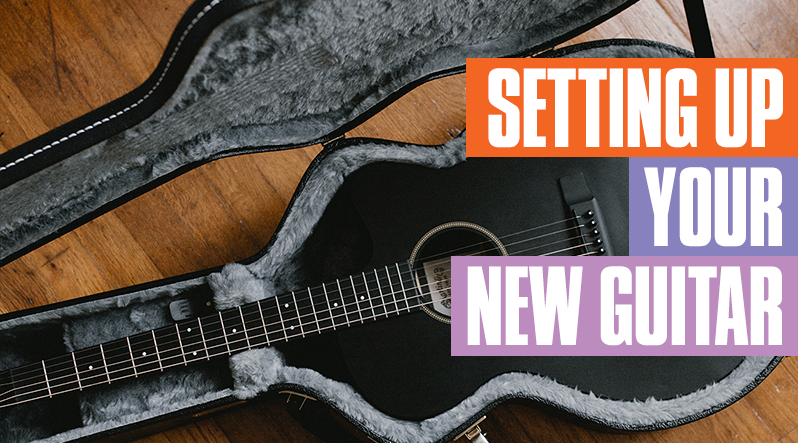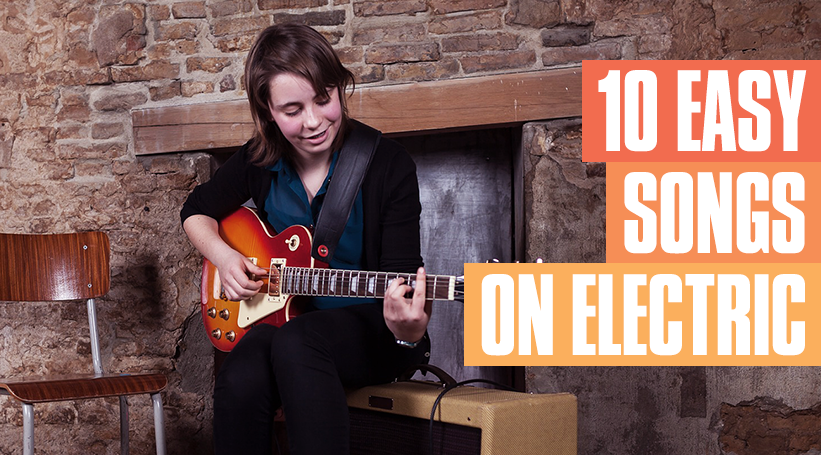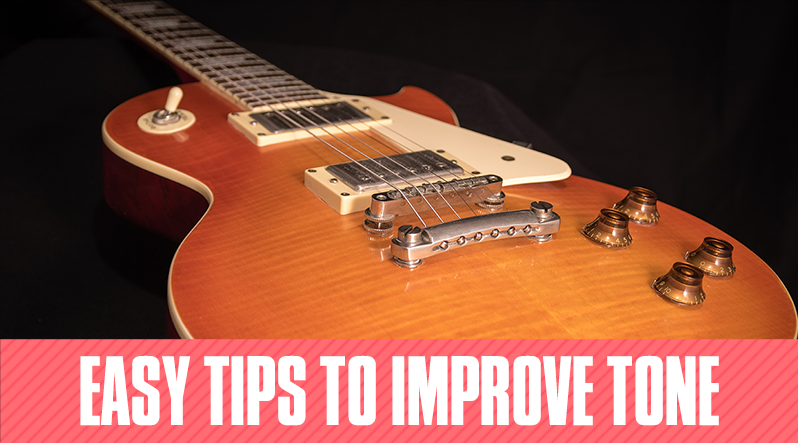
After working on literally thousands of guitars, I’ve found there are a few fundamental things that impact guitar sounds, or I should say guitar tone more than others.
Use this as your guitar tone guide on how to get the best guitar tones.
1. Setup Your Guitar Properly
Absolutely every instrument must go through a setup procedure to make it playable and acceptable. High end instruments typically get a significant degree of detailing before they ever leave the factory but will often get a final adjustment at the point of sale.
Lesser instruments will of course not get the same amount of tweaking to maintain price points. In each case, a thorough guitar setup will “user-proof” an instrument by eliminating common problems and dialing in the guitar to suit its owner.
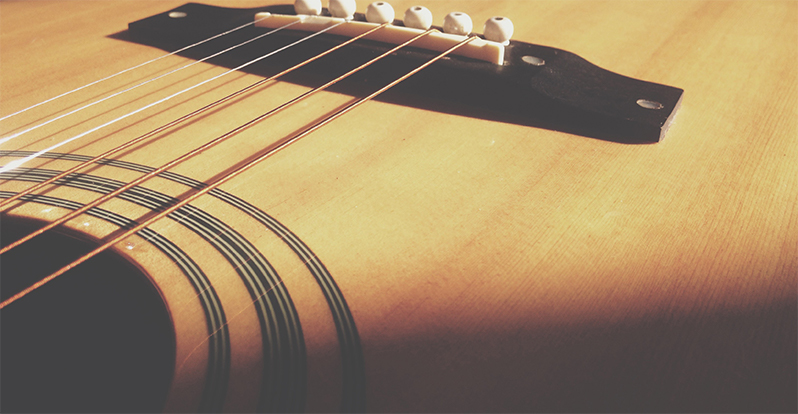
2. Install Your Strings the Correct Way
There is certainly more than one way to install strings, and there are incredibly bad ways. Installing the strings using a self-locking technique is one of the best ways to ensure you avoid slippage and maximize energy potential.
"please don’t thread the string through the hole twice"
When you’re restringing your guitar, a simple and very effective method is to take the tag end of the string and wrap it twice around the string where it first enters the post. It’s essentially a knot, and extremely effective. Please don’t thread the string through the hole twice! It's very difficult to remove, and can be prone to tuning issues because of the excess slack.
3. Use Quality Strings
Simply put, your chances of better tone are easily increased by using good quality strings. Cheap strings serve up an extra special level of aggravation for guitar players and you wouldn’t even suspect them. “But they’re new!” Sound familiar? They may be new, but they may not be good quality strings.
4. Choose the Right Type of Strings
Considering the diverse styles of music we play, the type of strings you use will directly impact what you hear, and what you want to hear. For instance, if you’re looking for high end brilliance and transparency, you may want to stay away from flat wound strings which are naturally mellow.
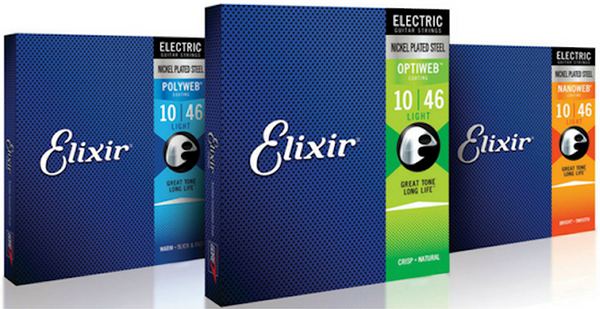
5. Make Sure the Truss Rod is Set Correctly
An incorrectly set truss rod can impact tone in the weirdest ways. An overly loose truss rod can actually rattle, and one that's too tight can be a problem as well. A properly adjusted truss rod will let the guitar carry the strings efficiently, which will result in a positive impact on your tone.
6. Adjust The Nut
The nut can’t be loose or poorly dressed. It’s amazing how much this one part influences tone, playability, and tuning stability. Please do not underestimate its importance. An improperly cut nut will suck up tone quicker than you can say clean my carpets.
The nut simply needs to be of sufficient character to do its job as a primary conductor of string energy.
Counterintuitively, sometimes the best product for transferring tone is a cheap plastic part! Whatever the material, they’re all filters for the vibration of the strings. As previously mentioned, it all depends on the frequencies naturally apparent in the instrument’s core construction.
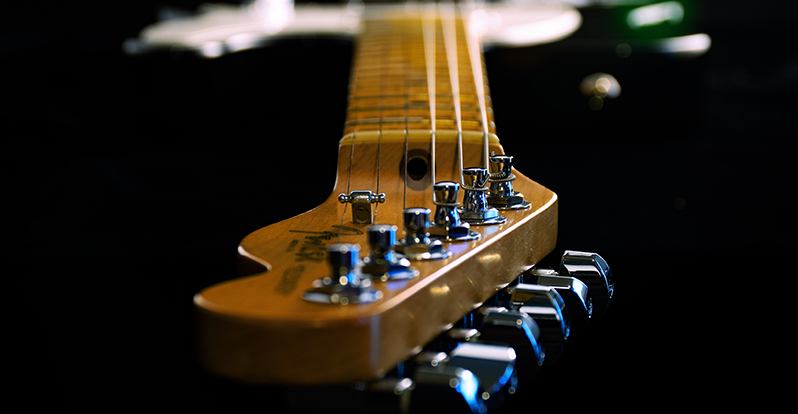
7. Check for Loose Frets
Loose frets are a big issue. Think of frets like tires on your vehicle. If they’re loose, you’re heading for the rhubarb, and so is your guitar tone. Frets are a direct connection between string energy and the guitar. And like tires, they wear down.
A simple test to see if your frets are rooted properly is to give them a little knock at their outer edges, at the ends. A loose fret is easy to pick out since it will sound dull when you tap it, instead of a solid knock. If you suspect loose frets, take your guitar to your local qualified tech to have them properly fixed.
8. Check for Loose or Ringing Hardware of Any Kind
It might be fun to create some guitar sound effects from ringing parts but loose parts are a sure-fire way to lose tone and make your guitar sound muddy. They can be anywhere around the guitar, inside or out, and they’re all tone suckers. Luckily, most of them are an easy fix, the hard part is finding the culprits.
Things like:
â—‹ battery compartments - tighten the retainer screws
â—‹ loose internal cabling - shift the cables around a little
â—‹ overly resonant springs in Strats - put a little packing of some kind underneath them
â—‹ ringing above the nut - hello hair scrunchie!
â—‹ loose or sloppy saddles
â—‹ loose tuners - tighten them up!
â—‹ switch tips - tighten up
â—‹ strap buttons - again, tighten them up
9. Check for Dirty or Corroded Electronics
If you’re an electric player, connectivity starts at the source. Corroded or loose electronics, like on the guitar tone switch, or the guitar tone control circuit, will kill your guitar sound. Without a solid connection between the output of your guitar and your amp, your fight for better tone is literally on thin ground.
Look for things like:
â—‹ a loose jack - tighten it up
â—‹ corrosion in the jack sleeve - clean it with a bit of rolled up 220 sandpaper
â—‹ scratchy pots - typically a job better left to your friendly neighbourhood guitar tech
What are the leading causes of poor tone?
One way to look at tone is to rationalize that every part of the guitar must vibrate, which directly impacts the tone.
Let’s look at the subject of tone in terms of extremes:
If an instrument was a single unified piece of highly resonant material, meaning no peripherals whatsoever like tuners, pickups, or even frets, all vibrations would resonate throughout the instrument uninterrupted - you would have maximum tonal potential. Conversely, an instrument that is riddled with loose parts will have its tonal energy sucked faster than a popsicle in a desert.
Between these two extremes lies a grocery list of items capable of leaving your tone entirely cold, or way too hot! You have to be mindful of these things when finding your guitar tone.
Conclusion
As you can see, improving your tone starts with a solid foundation. Get your guitar in good, dependable working condition first, free from the gremlins that lurk in the unattended shadows.
If you’re confident that your guitar’s inherent tone is still waiting to be discovered, feel free to experiment with variables you can control. Things like string gauge, action, supportive and peripheral hardware. Finding that magic mixture can be an exciting challenge, and a very rewarding one when you hit the bullseye.
________________________________________
About Steve Blundon
Steve Blundon has been in the music business since his first stint with touring bands in the 80’s.
In the 90’s, he spent the decade working in a popular local music shop refining his guitar setup skills, managing sales, actively gigging, and teaching as many as 60 students per week. When their operation closed in 2000, he opened his own store which he ran successfully for 15 years.
Today he still maintains a healthy list of guitar service clients and spends his time developing websites associated with the music industry, the main site being GuitarNiche.com.
